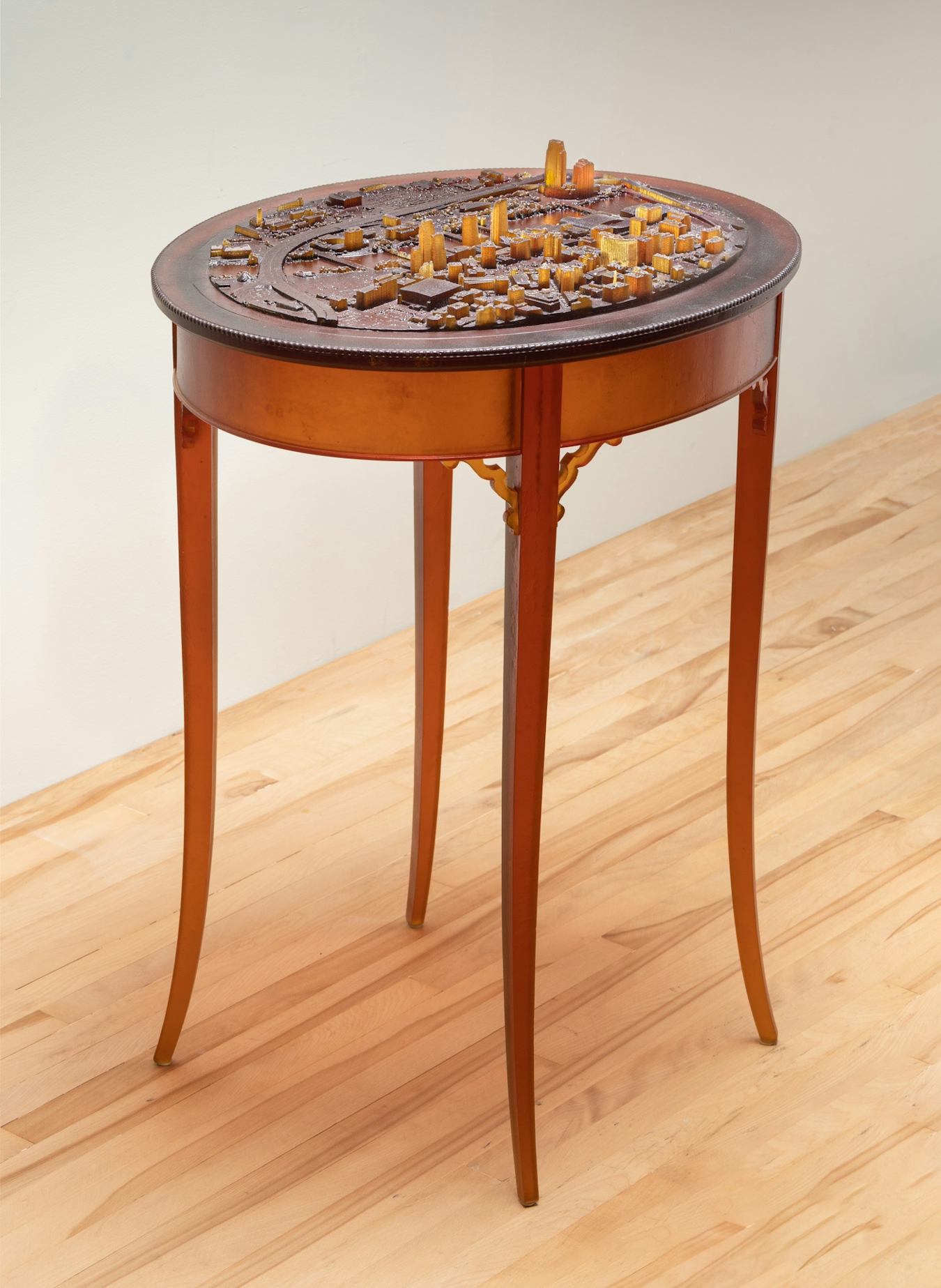Artwork Details
b. 1972
About the Artwork
Norwood Viviano is one of a younger generation of glass artists who make technically innovative work while also exploring the symbolic potential of the material. In addition to art, his interests include sociology and economics; he is especially engaged in exploring historical relationships between cities and industry.
Viviano was raised in and around Detroit, Michigan. After earning an undergraduate degree in sculpture and glass at Alfred University in New York State, he returned to Michigan and completed his MFA at Cranbrook Academy of Art, outside Detroit. Now based in West Michigan, Viviano continues to examine the state’s history in sculpture and installation work that incorporates data, highly specific and detailed mapping technology, and intuitive, creative response.
Recasting Grand Rapids (2020) is part of an ongoing series in which Viviano investigates the power dynamics and interactions between dominant industries and their base communities over time. The Recasting sculptures are created by kilncasting, a multi-stage process that ultimately produces a sculpture of solid glass. Works in the Recasting series combine two distinct parts: a three-dimensional model of a city and an object representative of that community’s most powerful industry. A crucial decision for the artist in realizing Recasting Grand Rapids and other works in the series is determining which area and how much of a cityscape to include, and then determining how to crop it exactly to fit it’s base — in this case an oval tabletop. Viviano zeroed in on the area of Grand Rapids that has undergone the most transformation. The central feature is the Grand River, which provided waterpower for manufacture and transport for both raw materials and finished product. The miniature city sits atop a French Revival side table manufactured by Imperial Furniture Co. of Grand Rapids in the 1940s, which the artist painstakingly disassembled to then recreate in a rich, glowing amber glass. Even with the mid-20th century public’s appetite for sleek, modern furniture, the French Revival style, which itself looked back to earlier French design, was still popular. Viviano also selected the French Revival table as a way to reference Grand Rapid’s own 19th century standing as the center of furniture manufacture in the U.S.
